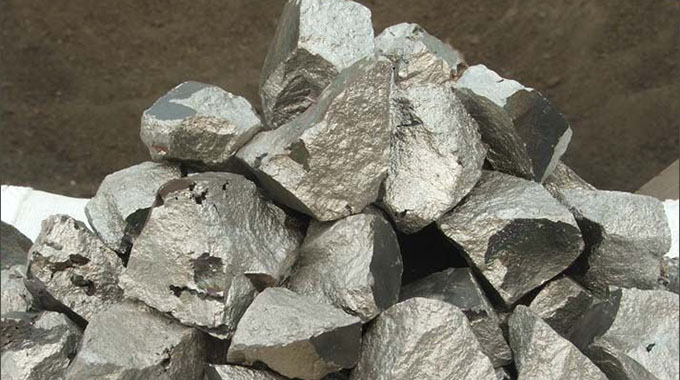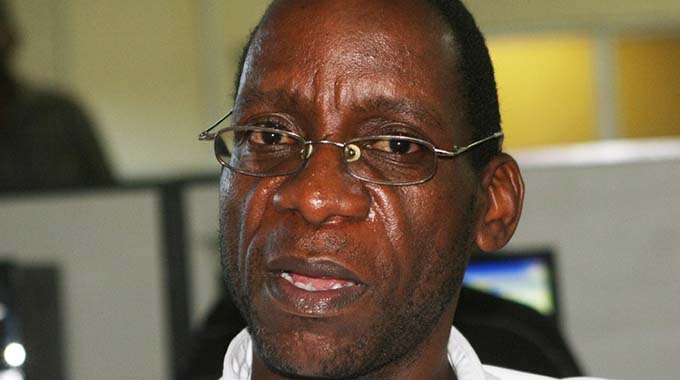Zim’s ferro-chrome potential towards V2030

Freedom Mupanedemo Midlands Bureau
Zimbabwe has the capacity to meet the Second Republic’s set target of becoming an upper middle income economy by the year 2030 if the ferro-chrome industry gets support.
This was revealed by chairperson of the Confederation of Ferro-chrome Producers in Zimbabwe CFPZ), Mr John Musekiwa yesterday.
He said Zimbabwe holds the world’s second largest chrome ore deposits, with approximately 900 million tonnes of untapped ore, compared to the world’s estimated 7.5 billion tonnes of the resource, which put the country on a good stead to compete on the grand stage.
According to experts, ferro chrome is used in the production of stainless steel, which is defined as a steel alloy, with a minimum of 10 percent chrome by content, the average chrome content being 18 percent.
The Metals and Alloys Corporation states that stainless steel depends on chrome for its appearance and its corrosion resisting properties. High carbon ferro chrome is most commonly used in specialist applications such as engineering steels.
Lower carbon ferro-chromes are produced in smaller quantities for more specialised applications.
And Zimbabwe, whose exploitation of the resource is currently just above 5 percent attributable to medium and small-scale miners using open cast and pit mining, could tap into its vast potential.
“Currently, mining to extract lumpy ores is carried out in large part by semi-mechanised medium sized players and small-scale miners from open pit operations.
“The near future will see an increase in underground mines as the open-pit resource is dwindling,” he said.
Mr Musekiwa said the lifting of the ban on chrome exports by the new administration saw exports of chrome reaching 1.5 million tonnes of ferro-chrome last year, contributing significantly to the country’s foreign currency earnings.
“Following the lifting of the ban on the export of chrome ore output has increased exponentially from the all-time low of 186 000 tonnes in 2015 to approximately 1, 5 million tonnes in 2018. This trend of a huge increase in chrome ore exports is similar to what is happening in South Africa,” said Mr Musekiwa.
He said despite the country being one of the world’s largest holder of ferro chrome deposits, the country was still to fully exploit the resource to the maximum advantage.
Mr Musekiwa said the global ferro chrome output for 2018 was 13 million tonnes and Zimbabwe only contributed just above 2,5 percent despite the huge deposits.
“While 2018 production of around 350,000 tonnes was a new record for the country, new capacity being commissioned and planned for commissioning within the year could see a 20 percent increase of ferro-chrome production capacity to 418,000 tonnes in 2019,” he said.
Mr Musekiwa said they were also working on improving technology use.
“Most of the smelting technology in the country is old and the industry recognises the need to invest in new technology, especially technology that can process fines. Some of the producers have plans to install fines agglomeration technology so that they can take advantage of the chromite fines resource which account for approximately over 40 percent of the country’s chromite ore. New technology will also improve smelting efficiencies and thereby improve viability of the industry. Capital availability and cost thereof will be critical factors for the Industry in its quest to invest in new technologies.” he said
He said the industry was looking at increasing production to about 800 000 tonnes per year by 2022.
“With approximately 12 percent of the global chromite resources and its chrome ore and ferro-chrome production currently contributing less than 3 percent to global ferrochrome and chrome ore output, the Zimbabwean industry has significant potential to grow in leaps and bounds.
“In line with Government’s vision for the country to achieve middle class status by 2030, Zimbabwe has a clear vision of two million tonnes of stainless steel being produced in the country within the next decade,” said Mr Musekiwa.







Comments